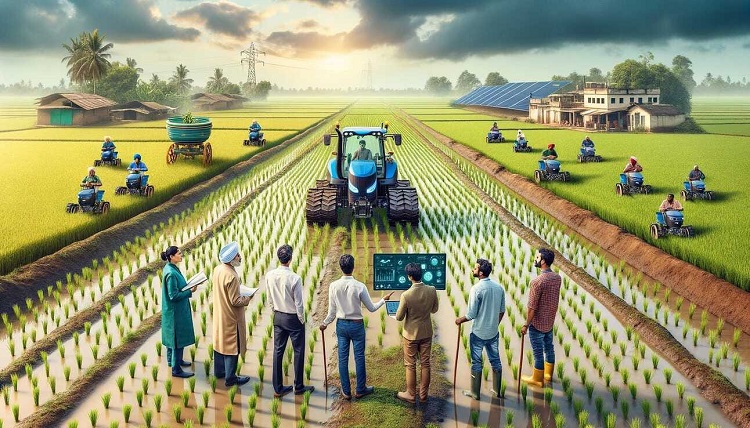
-
Phone:
+91 934 567 891 -
For Investments:
investment@farmmyland.in -
For Partnerships:
partnerships@farmmyland.in

Agriculture has always been the backbone of India’s economy, supporting over 58% of the country’s population. India was once one of the largest food producers and exporters in the world, known for its rich, diverse crops. However, in recent decades, we have started importing food products from other countries, including packed and processed foods. This shift raises serious concerns about our agricultural sustainability, farmer welfare, and national food security.
At the heart of this crisis are the financial struggles of Indian farmers, which make agriculture unsustainable for many. A significant portion of farmland remains uncultivated simply because farmers lack the capital to cultivate it. In this blog, we will explore:
Despite India being an agrarian economy, its farmers face some of the worst financial difficulties in the world. Here are some of the major problems that push farmers into debt and poverty.
Most farmers in India are landowners but not capital owners. While they own agricultural land, they often lack the money needed to cultivate all of it.
For example, a farmer with 10 acres of land may only have the financial capacity to cultivate 2–3 acres. The remaining land remains uncultivated or is leased out at extremely low rates (?7,000–?15,000 per acre per year).
Unlike salaried employees, farmers have an uncertain and seasonal income. They have no fixed monthly cash flow, making financial planning difficult.
A failed crop due to drought, floods, or pest attacks can wipe out an entire season’s earnings, leaving farmers without money for:
This income instability makes it difficult for them to secure loans, as banks see them as high-risk borrowers.
Even when farmers successfully cultivate crops, they face:
Farmers rarely receive the full value of their produce, making farming financially unviable in the long run.
When farmers fall ill or face accidents, they have no financial backup, making them even more vulnerable to poverty.
With each new generation, farmland gets divided among family members, reducing the size of individual plots. Smaller plots lead to:
As a result, India is losing valuable agricultural land that could have contributed to food security and economic growth.
Farm My Land is not just another farming venture—it is a financial empowerment model for farmers. Instead of offering short-term relief or government subsidies, it provides a structured, long-term solution that makes agriculture sustainable.
Here’s how the unique land leasing model is addressing farmers’ financial struggles.
Instead of waiting for seasonal earnings, farmers who lease their land to Farm My Land receive guaranteed fixed monthly payments.
This creates:
Farmers can now approach banks with a consistent income stream, making it easier to get financial support for other ventures.
By leasing their land to Farm My Land, farmers:
This is a game-changer, as farmers can now earn without the financial risks of traditional farming.
Unlike traditional leasing models, Farm My Land prioritizes farmer welfare by offering medical benefits.
By using modern farming techniques, Farm My Land ensures that:
This contributes to India’s food security, economic growth, and self-reliance in agriculture.
With a fixed income stream, medical benefits, and proof of earnings, farmers can:
This shifts farmers from financial uncertainty to structured financial independence, making them economically empowered stakeholders in India’s agricultural revolution.
India’s agricultural crisis is not just about land—it is about financial sustainability. Farmers do not just need better farming techniques; they need financial security, predictable income, and access to healthcare.
Farm My Land is bridging this gap by introducing a structured, risk-free income model that empowers farmers while ensuring India’s agricultural self-reliance.
With this model, farmers can:
This is not just a business model—it is a revolution in how India’s agriculture operates.
Farm My Land is building a financially secure, agriculturally self-sufficient, and nutritionally strong India.
Are you ready to be part of the change?